|
Let no one think that I am some weak and sickly woman, or one of those quiet spirits! Quite the opposite! I am most friendly to my friends and most fearsome to my enemies. Euripides, Medea 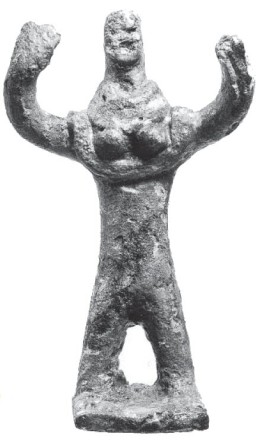
female statuette with raised arms from the collective burial of Ergeta, Colchis |
|
In some aspects the Caucasus region is assumed to be a land of strong women.
In Greek antiquity it was Medea, daughter of the king of Colchis, who was depicted as an extremely strong character.
Medea was a very clever woman and a skilled sorceress but just as well she was utterly unscrupulous and radical in reaching her goals.
She cheated her father out of love for a stranger, the Greek Jason. She sacrificed her brother to escape from Colchis.
She even went so far to sacrifice her own sons to punish her husband Jason when he left her for another woman.
Myths and sagas from the Caucasus also indicate the important role of women.
In the Caucasian Nart saga tradition there is a mighty woman who dominates. It is the wise and enticing Satanaya - the Great Mother of all Narts.
The Nart sagas reflect an egalitarian relationship between men and women. Goddesses and heroines are very important in all aspects.
Satanaya embodies wisdom and brains, she also is a sorceress and seeress. She represents beauty, eternal youth but also passion and lust.
In this regard, it is little surprising but very significant that in the Middle Ages there was a queen named Tamar (1184 - 1213) who made Georgia great. She represents the Golden Age of Georgia. |
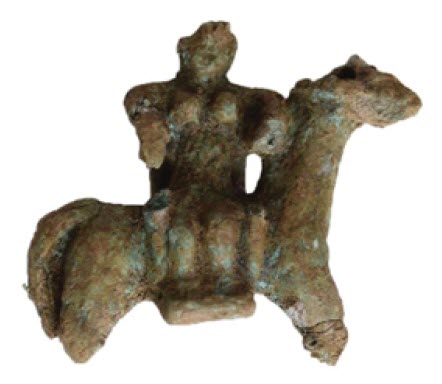
woman sitting sideways on a horse, from Makhvilauri / Colchis |
|
In Greek antiquity Colchis was seen as a distant country and as a rich one because of its gold. That is why, the Greek hero Jason was sent to Colchis. His task was to steal the famous Golden Fleece.
When the Greeks came to the region east of the Black Sea in the first half of the 1st millennium BC they encountered a well-organized, high-developed people. From the 8th till the 1st century BC there existed the kingdom of Colchis which had a very special culture. The political center was inland at the river Phasis (today Rioni). In the ancient sources there is mentioned the capital Kutaia. It is obvious that this place is identical with today's Georgian city Kutaisi.
At the time when the Greeks learned to know Colchis, this land was certainly not a land of Amazons or a land of matriarchal social order. But it was obviously a land with rather balanced gender relations. Actually, this was enough for the patriarchal Greeks to recognize in Colchis the homeland of the self-reliant Medea.
Very characteristic for Colchis there are figures of riding women. They always sit sideways on the horse, very often they hold a baby in their arms. That riding woman represents the Colchian main goddess - a goddess who stands for the belief in rebirth. That is why, pompous individual burials had no meaning for the Colchians because they knew that they were reborn. Life and death were an eternal cycle, so a richly endowed individual burial made no sense. Rebirth belief was common since Stone Age and connected with it was the predominating role of the woman because only she is able to bear. |
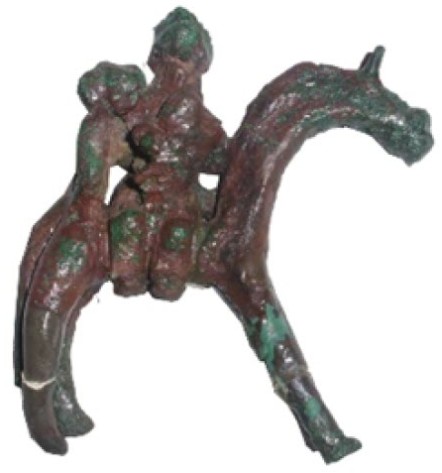
woman with child sitting sideways on a horse, from Tsaishi / Colchis |
|
Most of the ancient sources say that the Amazons lived at the river Thermodon in northern Central Anatolia. Besides this, there is the less known tradition about Caucasian Amazons.
The Greek historian and geographer Strabo (63 BC - 23 AD) is the essential source. He is considered to be very reliable; he traveled a lot and he scrutinized the older sources he used for himself. In the course of his description of the Caucasus he mentions that in the mountains above Albania Amazons lived. Albania is a region which roughly correlates with East Georgia and Azerbaijan. In detail he informs that a river named Mermadalis flows through the Amazon land. This river has its source in the Caucasus, then flows through the land of the Amazons. Later on, the river crosses a desert and empties into the Azov Sea.
|
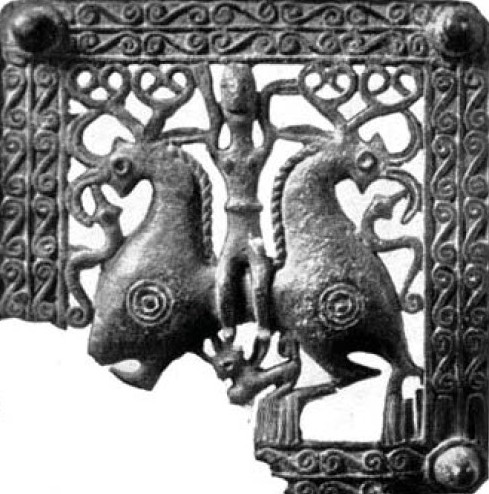
bronze belt buckle, found in Ghebi, northern Central Georgia This belt buckle belongs iconographically to the Colchis culture. A woman with raised arms sits on the back of 2 stylized deer figures. |
|
A concrete localization of this Caucasian Amazon land on the basis of Strabo's description is rather difficult. if you lay the focus on the local hint towards »Albania« this land must have been in the eastern part of the Caucasus mountains. On the other hand, if you consider the information that this river Mermadalis empties into the Azov Sea then only the river Kuban or one of his tributaries come into question. Then this Amazon land must have been in the western part of the Caucasus, that would also mean north of Colchis. |
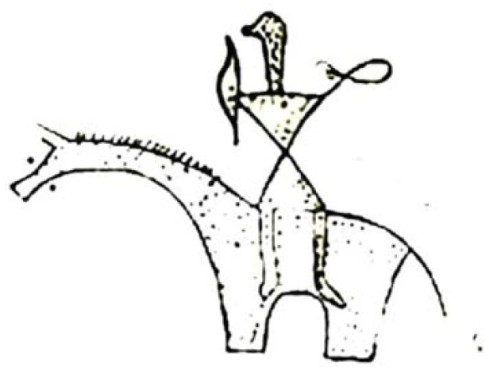
schematic drawing on a bronze ornament leaf of a belt It was found in a grave in Zhinvali (South Ossetia). It dates from the 8th/7th century BC. It shows a riding woman with bow and arrow. She sits sideways on the horse. |
|
The archaeological research offers a possible solution. In South Ossetia there have been discovered burials and artifacts which suggest a connection with Amazons.
In Tli (Tlia) in the northern part of South Ossetia, in the Central Caucasian mountain range, there have been found women's graves containing weapons. They belong to the Late Bronze Age and Early Iron Age. However, there have also been found men's graves containing weapons. In fact, these are the majority. It is very amazing that there are no differences concerning the grave goods. Men and women are equally wealthy. Most of the graves in Tli are individual burials. There are also collective burials but not many.
|
| B o o k s | |
|
Gerhard Pöllauer: The Lost History of the Amazons Recent research findings on the legendary women nation ISBN: 978-1-4461-9305-1; Paperback, 148 pages, 87 black-and-white pictures, 3 illustrations Price: $17.48
This book focuses on the numerous traces of the Amazons.
It reports on latest findings and investigation in the legendary homeland of the Amazons at the
river Thermodon and on the Amazon island Lemnos. |
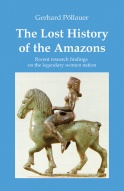
|
|
Gerhard Pöllauer, Geheimnisvolles Lemnos. Die von Frauen beherrschte Insel (Mysterious Lemnos. Island dominated by women) ISBN: 978-3-902096-77-7; Paperback, 128 pages, 97 black-and-white pictures, 3 color photos, 1 map Price: EUR 13.00
The rather unknown North Aegean island Lemnos amazes with its great prehistoric past.
About 5000 years ago there existed a highly-developed civilization which created imposing cities,
mighty rock buildings and impressive sanctuaries on this Greek island. The discovery of Poliochni was sensational.
Because of its largeness and refinement this Bronze Age settlement is regarded as the most ancient city of Europe.
Also the discoveries at Myrina in the west and Hephaistia in the north witness the island's
prehistoric importance. Presumably there was a further city in the Northeast - Chryse, which was sunken under the sea.
|
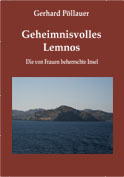
|
Updated: November 28, 2025

|

|

|
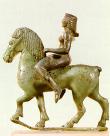
|

|

|

|

|
Picture Gallery and Books *** Our Projects *** About Us Copyright © 1997-2025 Amazon Research Center |

|